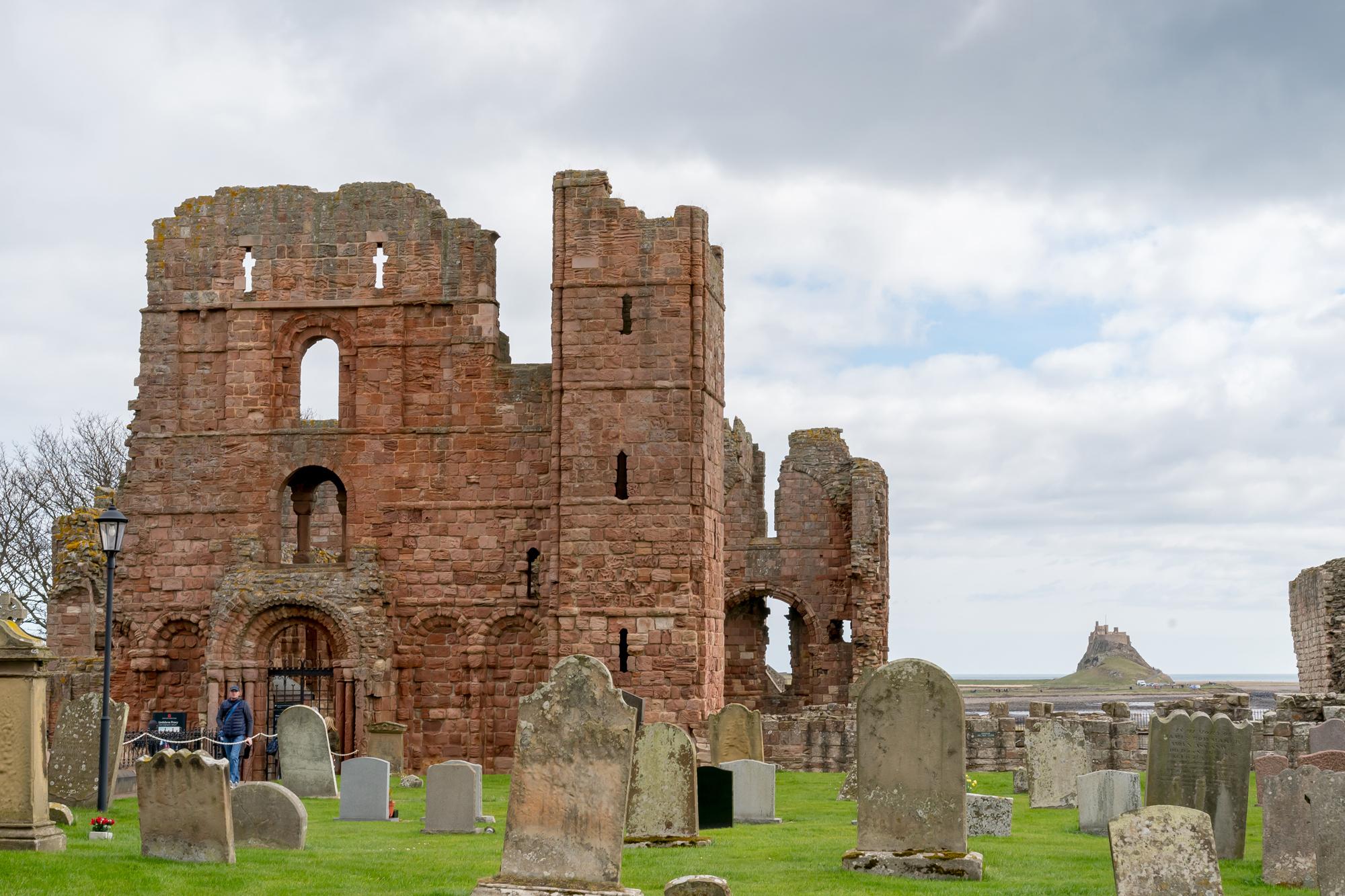St Mary the Virgin
Holy Island, Northumberland
Holy Island, or Lindisfarne, is the site of a monastery founded by St Aidan in 635 AD. It marks the establishment of Christianity in the northeast and is still a centre of pilgrimage today.

Follow in the footsteps of the ancient monks who built their priory here nearly 1,400 years ago, and explore the wild coastal beauty of Holy Island.
Holy Island, Northumberland
The extensive ruins visible today are dominated by the 12th century priory church, which probably stands on the same spot as its Anglo Saxon predecessor. The associated monastic buildings were modified in the later Middle Ages in response to the changing needs and numbers of the monks.
The church was built by about 1150. Changes in the stonework suggest that the east end, crossing and two bays of the nave were completed first; the nave was then extended and the west front built in a second phase. Its architecture recalls that of the Romanesque cathedral at Durham, to reinforce the links between Lindisfarne and its mother-church.
The west front of the church was flanked on both sides by tall corner turrets. Battlements and cross-shaped arrowloops were added in the mid 14th century when the whole priory was fortified in response to the outbreak of war with the Scots.
The four arms of the church meet under the famous ‘rainbow arch’, a rib from the high crossing vault that survived when the central tower collapsed in the late 18th century.
At the east end, where the altar was located, foundations can be seen of the first, early 12th-century presbytery apse. This was demolished in the later 12th century when the presbytery was doubled in length and finished with a square end.
The adjacent stone buildings provided living quarters for the medieval monks and were built in the second half of the 12th century after the church had been completed. The whole complex was extensively reconstructed in the mid 14th century with alterations to the hall and buildings of the south range.
The southern end of the hall is protected by a substantial fortified gateway, with a defended entrance or barbican. The gateway enabled the gatekeeper to control access to the hall and inner courtyard and to defend it if the outer courtyard came under attack.
At the entrance to the priory is the medieval parish church of St Mary. Between the priory and the parish church is a large stone socket base for a monumental cross. This may be of Anglo Saxon date, and in its original position.
Just offshore is St Cuthbert’s Isle, the site of the 7th century hermitage used by Cuthbert and his successors as a retreat. The island is accessible on foot at low tide and the footings of low walls are still clearly visible under the turf.
Holy Island, Northumberland
Holy Island, or Lindisfarne, is the site of a monastery founded by St Aidan in 635 AD. It marks the establishment of Christianity in the northeast and is still a centre of pilgrimage today.
Bamburgh, Northumberland
A church was founded on this site in 635 by St Aidan; the site of his death is marked by a shrine within the present church which dates from the end of the 12th century.
Lowick, Northumberland
Visitors have described the church in the visitors book as 'impressive' and 'lovely'; they admire the particular peaceful quality of the building.